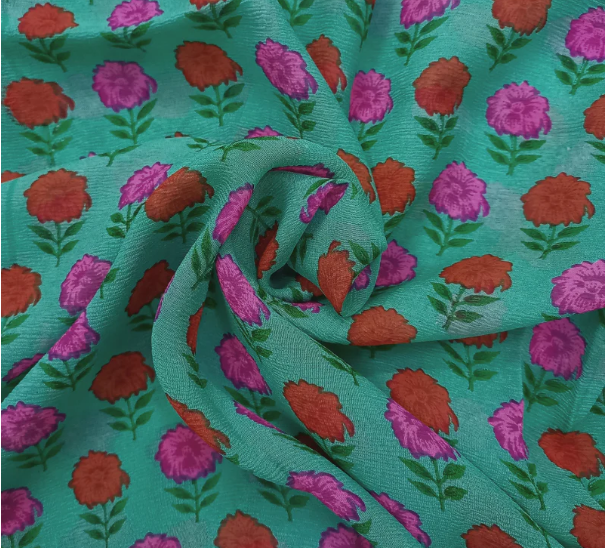The word "chiffon" is used to describe a wide range of different fabric kinds that all share some common characteristics. This kind of cloth is sheer, which means it has a straight weave and is light and mid.
When it was first produced in the middle of the 19th century, this sort of cloth, which was initially made of silk, was expensive and in high demand among upper-class ladies in Europe and the United States. The French word "chiffon fabric" technically means "cloth" or "rag," but it has come to refer to any kind of shiny, sheer fabric that is woven in a specific manner.
Chiffon fabric was initially produced in France, but as the Industrial Age gained momentum, its manufacture spread to other countries. By the early 1900s, silk chiffon was being produced in large quantities in the United States, and manufacturers of this material there were beginning to express interest in using another material instead of silk to make chiffon fabric.
1938 saw the release of the first non-silk chiffon for consumer use. It was composed of nylon, which was hailed as a miraculous fabric that would quickly displace virtually every kind of organic textile at the time. However, significant problems with nylon as a chiffon fabric soon emerged, and for a while, the majority of chiffon was once more created from silk.
However, a polyester variant of chiffon was created in 1958, and the majority of chiffon in use today is created from this entirely synthetic material. Polyester resembled silk in many aspects as a chiffon fabric, but it was obviously not as soft or "silky" as this biological material.
Although a large portion of modern chiffon is still composed of polyester, producers of this sheer and enticing fabric have also experimented with employing rayon. Cotton may also be utilized in some circumstances, but it is less suitable for chiffon than many other artificial or semi-synthetic materials because it is prone to pilling and is relatively delicate.
Chiffon is still partially made of silk, but silk chiffon is now regarded as a luxury fabric and is only offered in the form of rather pricey chiffon clothing.
Depending on the type of material used to weave this special form of fabric, several techniques are utilized to create chiffon. For instance, raising silkworms, softening cocoons, and reeling filaments are all steps in the manufacture of silk. On the other hand, there are no biological materials used in the manufacture of polyester, and this fabric is formed totally from synthetic chemicals that are created in a lab.
Once the textile yarn has been created, chiffon fabric can be made from any base material using a consistent weaving pattern. It is woven together using a loom or a commercial weaving machine using yarn that has been organized in opposing S-shaped and Z-shaped curves.
How Does the Environment Be Affected by Chiffon Fabric?
Depending on the kind of material used to create this fabric, chiffon manufacture may have different environmental effects. While it's true that the manufacturing of fully synthetic fabrics generally has a more negative impact on the environment than the creation of semi-synthetic or organic fabrics, it's also critical to consider the various production methods that various manufacturers employ.
Chiffon fabric is mostly made of polyester, while some producers still employ nylon to create this fabric. Petroleum oil, an unrenewable resource, is the source of both nylon and polyester. Petroleum oil must be acquired using a lot of energy, and doing so is virtually always bad for the ecosystems in the area.






0 Comments